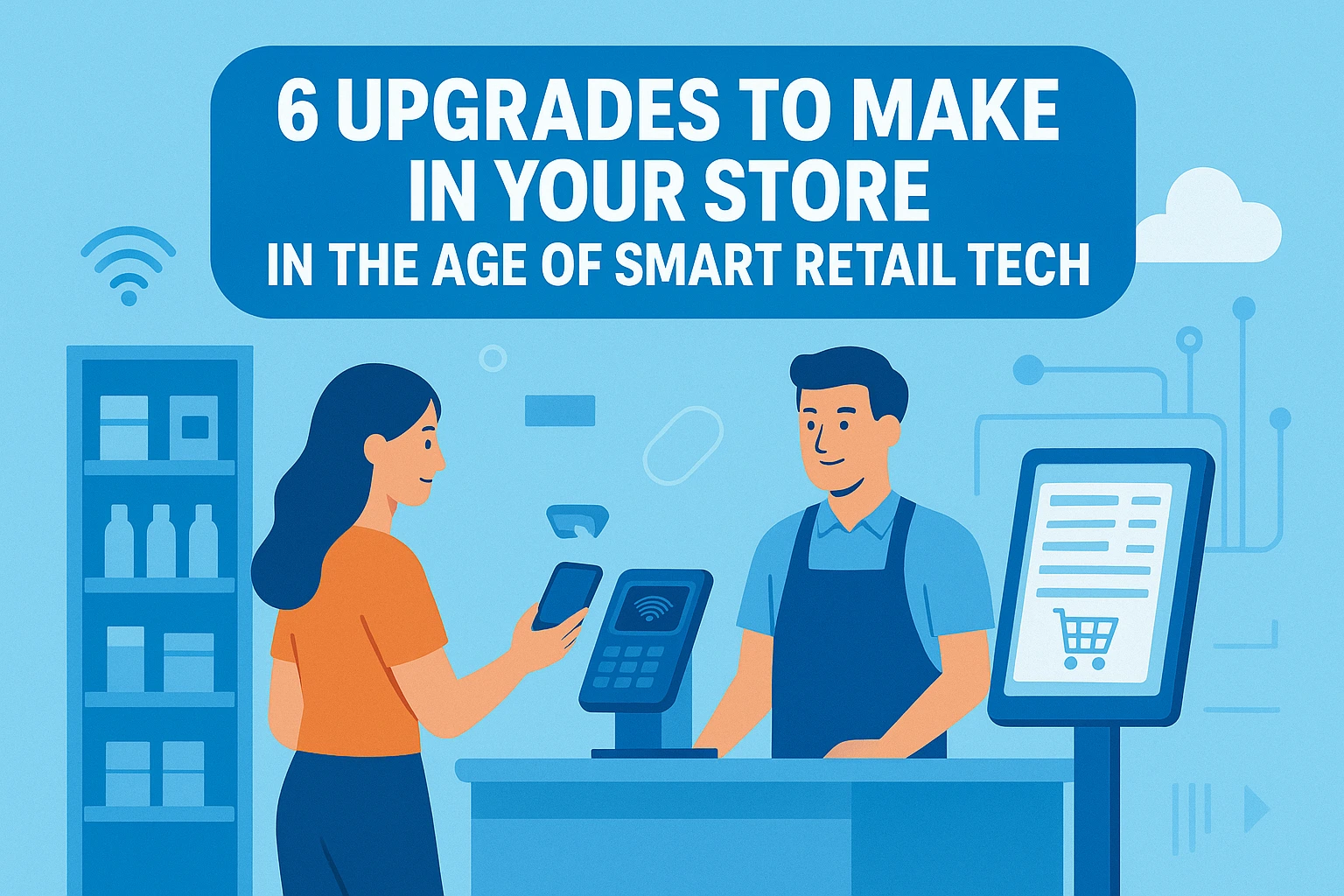Today’s Filipino shoppers value convenience and more personalized experiences, whether they’re supporting a homegrown brand or shopping at a larger retail chain. With the widespread use of smartphones and the growing popularity of mobile wallets, customers now expect seamless transactions and relevant promotions. Many of these expectations are made possible through the use of smart retail technologies. These are digital tools and systems that use data, automation, and connectivity to improve how retail businesses operate and serve customers.
While traditional selling methods still serve a purpose, relying solely on them can limit a store’s ability to grow or stay competitive in today’s increasingly digital market. Consumer behavior is evolving, and physical stores thus need to keep pace to attract new customers as well as retain existing ones who are becoming more tech-savvy and convenience-driven.
The good news is that embracing retail tech doesn’t always require major renovations or costly overhauls. Many tools are now more accessible, scalable, and user-friendly than ever. In this article, we’ll explore practical upgrades that Philippine retailers can make to modernize their stores.
1. Accepting More Ways to Pay with Modern Payment Solutions
One of the first upgrades that can immediately improve the customer experience is expanding your payment options. Since Filipino consumers are increasingly opting for cashless transactions, investing in a modern payment terminal allows your store to accept a wide variety of payment methods. This includes mobile wallets like Maya, as well as credit and debit cards issued by Visa, Mastercard, and local banks under BancNet.
To maximize your investment and provide a seamless payment experience, it’s best to choose a credit card machine like the Maya Terminal that supports Dip (EMV chip), Tap (NFC/contactless payments), and Magstripe. This ensures compatibility with the most common card technologies used in the Philippines and abroad, allowing you to serve a wider range of customers regardless of how they prefer to pay. In particular, dip and tap payments offer better security and speed, which can help reduce transaction times and the risk of fraud.
2. Upgrading Your POS System for Better Efficiency
Another highly impactful upgrade is transitioning from traditional cash registers or manual record-keeping to a smart point-of-sale (POS) system. A cloud-based POS can automatically track inventory, generate detailed sales reports, and even provide insights into best-selling products and customer behavior.
For example, if you run a fashion boutique, a smart POS can help you monitor which clothing styles are popular during specific months, allowing you to plan future stock accordingly. Many modern POS systems also integrate with mobile payment options and loyalty programs, giving you a unified system that’s easy to manage.
3. Using RFID to Track Inventory in Real Time
Managing inventory can be time-consuming and prone to errors, especially if you’re still relying on manual stocktaking or barcode scanning. RFID (short for radio frequency identification) technology solves this by allowing you to track items in real time using smart tags that can be scanned remotely and in bulk.
In the case of a grocery or electronics store, RFID can help quickly locate items, identify low stock levels, or detect missing products without needing to physically touch each item. This reduces labor time, minimizes human error, and ensures that you always have accurate stock data. Additionally, RFID improves security by helping you detect loss or theft, which makes it a practical investment for businesses handling large volumes of merchandise.
4. Enhancing Store Security with AI-Powered CCTV
Security remains a top concern for many retailers in the Philippines, especially in high-foot-traffic areas. While basic CCTV systems have been around for years, the new generation of AI-powered surveillance offers advanced features that go beyond video recording. These systems can include facial recognition, heat mapping, behavior detection, and real-time alerts for suspicious activities.
5. Engaging Shoppers Through Interactive Displays
Modern consumers are visual and tech-oriented, especially younger generations who enjoy exploring and discovering products on their own. Installing interactive displays in your store allows you to deliver engaging content while encouraging self-service. These can be touchscreen kiosks, digital signage, or even augmented reality stations, depending on your budget and brand image.
In a cosmetic store, for example, a digital kiosk can offer skincare recommendations based on a quick questionnaire. In a gadget shop, an interactive display can showcase product features or comparisons between models. These enrich the customer experience and free up your staff to focus on more complex inquiries or sales.
6. Leveraging Customer Data to Personalize the Experience
One of the most powerful advantages of adopting smart retail tech is the ability to collect and leverage customer data. Using tools such as CRM (customer relationship management) software or loyalty apps, you can start building customer profiles that reflect individual preferences, purchase history, and shopping behavior.
With this data in hand, you can offer personalized discounts, send birthday greetings with vouchers, recommend products based on past purchases, and re-engage inactive customers through targeted campaigns. This kind of personalization is becoming increasingly expected both in online and physical sites. However, it’s essential to stay compliant with the Data Privacy Act of the Philippines. Always obtain customer consent and safeguard their information to build trust and maintain your store’s credibility.
The age of smart retail is here, and it’s not just for big brands or high-end malls. Filipino store owners, regardless of size or industry, have a real opportunity to improve efficiency, boost sales, and elevate the customer experience through the right tech upgrades. As a recommendation, start with the most pressing challenges in your business and find a tech solution that addresses them directly. Taking a gradual and strategic approach lets you modernize your store without overwhelming your team or stretching your budget too thin.




